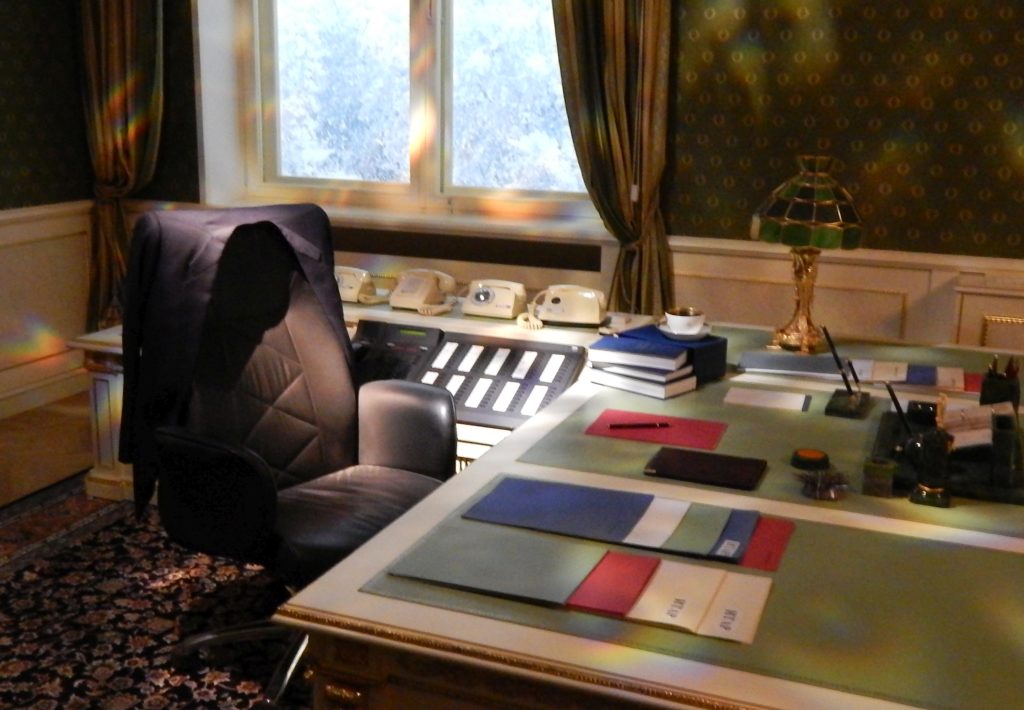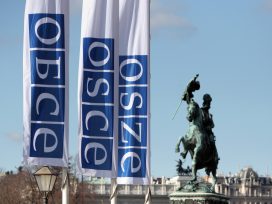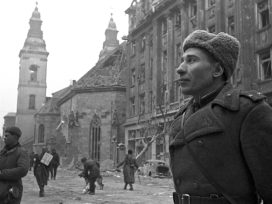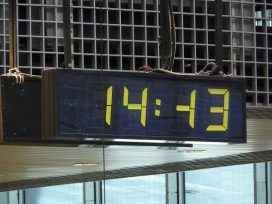Russia: Did liberals bury liberalism?
Liberalism as an ideology and a political movement has failed to take deep root in Russian society. It had a chance to do so immediately after the collapse of the Soviet Union, but today the chances for its rebirth are tiny. Instead, “systemic liberals” have become instrumental in ensuring the survival of a personalized power system.
After the collapse of the Soviet Union in 1991, post-communist Russia found itself in a paradoxical situation. On the one hand, a significant swathe of society longed for change. As of fall 1991, 47% of Russians said they were prepared to endure unemployment and other hardships for the sake of their future well-being. Only 17% of Russians were opposed to reforms.1 On the other hand, the liberal democratic elite did not know how to proceed with this desired change.
President Yeltsin chose Yegor Gaidar’s team to reform the country’s obsolete economy. However, the fact that economic reform was undertaken before political transformation had profound implications for Russia’s trajectory. As Juan Linz and Alfred Stepan have noted, doing things in this order “weakened the state, weakened democracy, [and] weakened the economy.”2
Gaidar’s reforms were met with an outpouring of criticism from all sides: the reformers were accused of not being radical enough, and of being inconsistent and insensitive to society’s needs. Privatization elicited the most criticism: independent analysts argued that privatization had been pursued in the interests of the state apparatus and old elites. Even among those in favour of reforms, 55% to 58% thought that the reforms were a power- and money-grab.3 In August 1991, two-thirds of Russians supported Yeltsin’s team, but by February 1992, once Gaidar’s reforms were underway, that number had fallen to 30%.4 Yeltsin sacrificed Gaidar and formed a pragmatic government under the leadership of an old Soviet bureaucrat, Viktor Chernomyrdin.
The liberals’ second coming was in 1993, when Yeltsin invited Gaidar and his colleagues back into the government. But by the beginning of 1994, it had become clear that Yeltsin had brought the Gaidarites back only to give liberal cover to his ‘September Revolution’ which ended with the shelling of the parliament in 1993. The president was looking for ways to preserve his reformist image, first and foremost in the eyes of observers abroad. Soon the Gaidarites were forced to leave the government once again.
In the summer of 1997, Yeltsin turned to the liberals anew and formed a group of “young reformers” within the government, headed by Anatolii Chubais and Boris Nemtsov. This move confirmed a trend: When the Kremlin found itself in a critical situation, it called on those who were ready to take responsibility for an unpopular agenda and who were loyal to the president.

The desk used by Boris Yeltsin during his time as president of the Russian Federation. It is now located at the Boris Yeltsin Presidential Center in Yekaterinburg. Photo: Knutulhu. Source: Wikimedia.
Finally, the time came for a fourth liberal government: in March 1998, Yeltsin appointed Sergei Kirienko, who was known as a liberal, as the new prime minister. Kirienko’s appointment was a desperate attempt by the president to find a way out of the deep financial and economic crisis Russia was falling into. By overseeing Russia’s default on government bonds and a currency devaluation, the Kirienko government wrote its own obituary. Moreover, its actions gave rise to suspicions that the liberals had worked to rescue those tycoons who were close to them.
Putin’s power vertical
With Putin’s ascendancy, liberals supported the new president, hanging their hopes on his modernizing potential. Former prime minister Kirienko, who was just recently appointed deputy head of the Kremlin staff responsible for the upcoming 2018 presidential campaign (and thus for Putin’s victory!), argued back in the early 2000s that old liberalism had become obsolete and that new liberalism had to pursue the demands of “the generation of statists and great power advocates.”5 Liberals (Petr Aven, for example) even called on Putin to become the “Russian Pinochet”, and Anatolii Chubais talked publicly about his notion of Russia as a “liberal empire”.
Putin’s second presidential term, which began in 2004, left no doubts as to where he was heading – towards more assertive one-man rule. Systemic liberals were not worried, having happily incorporated themselves into Putin’s “power vertical”. True, some, including Gaidar, were frustrated. Gaidar began to criticize Putin’s political regime, which he called a “closed democracy”. The refusal to build real democratic institutions, wrote Gaidar, constituted ‘a strategic mistake, and society will pay for this mistake for decades.’ This was Gaidar’s personal repentance. Additionally, one of the leaders of the pro-Kremlin liberal party Union of Right Forces (SPS), Boris Nemtsov, moved to embrace a real opposition movement and became the most popular leader of anti-Putin street protests until he was murdered in 2015. Most liberals, however, remained loyal to the Kremlin.
Today a new generation of systemic liberals continues to invoke the old mantra: economic liberalism is the key to solving all political problems. Liberal loyalists have supported Kremlin foreign policy, including the crucial element of the Kremlin’s new platform for consolidation: the annexation of Crimea, support for which has become a major criterion of political loyalty to the Russian authorities.
Could liberalism be reborn in Russia?
Two factors continue to keep liberalism from gaining broader appeal in Russia. The first factor is the belief that liberalism was responsible for all the ills and unhappiness of the 1990s. But how could Gaidar and his team be held accountable for a whole decade when they were in government for fewer than 14 months, with Yeltsin ready to betray them at any moment? Moreover, their policy could be defined as “economic liberalism”: with few exceptions, they never viewed liberalism as a political ideology and never agreed to fight for political rights and freedoms. The second factor is liberals’ current presence in government (or in the orbit of power). This, in the eyes of Russian society, makes liberalism an ideology of one-man rule. By reducing liberalism to its pragmatic economic version and associating it with unsuccessful economic reforms, systemic liberals misrepresented it.
Systemic liberals became hostages of a conceptual mistake that led to further deformation. They hoped that privatization would stimulate further changes (a typically Marxist approach). Privatization arrived on the scene in a situation in which even “ownership” was not a clearly defined legal term. Liberals’ philosophy seemed to resemble Friedrich von Hayek’s concept of “spontaneous order” – a concept that had at different times influenced other technocrats. In the Russian situation, hope for “spontaneous order” morphed into a nomenklatura-driven rent-seeking form of privatization that only reinforced popular suspicions and backlash. Indeed, the Gaidar government destroyed the state-run economy and made it impossible for Russia to return to the old system of state planning. But the construct that emerged was based on the marriage of power and business, which has become the cornerstone of a new authoritarian political regime. It brought about an aggressive oligarchy that proved, with few exceptions, unable to generate entrepreneurial activity and survived only through state capture.
Indeed, the first cohort of liberal reformers was constrained by several factors: its members’ inexperience, the small window of time they had to work in, the urgency of the country’s mounting problems, the lack of clear ideological orientation, the struggle for power they found themselves embroiled in, and Yeltsin’s inadequacy and weakness as a leader. Yeltsin belonged to the old nomenklatura and shared its authoritarian mentality; the liberals themselves were too Soviet, part and parcel of the old system, with no other force to rely on.
The next time liberals rose to the top, they had no doubts as to what kind of political regime they were serving. From that point on, their participation in government could only be the result of their readiness to work for an anti-liberal regime. Putin’s ascendancy erased all grounds for liberals’ naïveté. Serving a system of one-man rule had to be their conscious and rational choice, professionally and personally. Systemic liberals helped the Kremlin imitate and create “Potemkin villages” for display to the West, preserving Western hopes for liberal change in Russia and thereby bolstering Western misperceptions.
Today, liberals both within the government and outside of it who declare their readiness to cooperate with the Kremlin are elements of a system that has demonstrated its hostility to the core principles of liberal democracy. Systemic liberals in their various incarnations give the system extra breathing room and create a façade of development. Playing the role of stabilizer of Putin’s personalized rule, they undermine liberal principles and disorient the liberal electorate. Trying to prevent Russia from sliding into a deep crisis, they are stabilizing a corrupt petro-state that is anti-modernist by its very nature. The bitter irony is that they often contribute more to the survival of the system than do the siloviki (state security officers), who are exhausting domestic resources and undermining the credibility of the regime.
Liberals’ presence in the spheres of government related to the economy and finance, as well as the fact that the Kremlin leaders continue to use liberal economic slogans, prevents real liberalism from taking root in Russia. The Kremlin liberals have thus helped to bury Russian liberalism – at least for the time being.
The existence of systemic liberals creates insurmountable challenges for any liberal opposition force in Russia trying to build popular support. Opposition liberals can hardly lead a new wave of protests while systemic liberals oversee government economic and social policy. Indeed, mass protest could provoke a long-anticipated split within the Russian elite.
The destiny of Russian liberalism depends on when and how Russian society closes the chapter on a brand of liberalism that has been an instrument of an obsolete system. Putting an end to liberal conformism could prove to be one of the most powerful challenges that Russia faces. But without it, there is no chance for liberalism in Russia.
Institute of the Sociology of Parliamentarism, NTV program “Itogi”, November 17, 1993.
Juan Linz and Alfred Stepan: Problems of Democratic Transition and Consolidation, 1996.
Ekaterina Dobrynina, "Nazlo defoltam", Rossiiskaia Gazeta, 30 Jun 2011; Institute of Sociology and Friedrich-Ebert-Stiftung, Dvadtsat' let reform glazami rossian, Moscow 2011.
Dvadtsat' let reform glazami rossian, op. cit.
Lilia Shevtsova: Putin’s Russia, Moscow 2005.
Published 23 June 2017
Original in English
First published by IWM post No 119 (Spring/Summer 2017)
© Lilia Shevtsova / IWM / Eurozine
PDF/PRINTIn collaboration with
In focal points
Newsletter
Subscribe to know what’s worth thinking about.
Related Articles

From Helsinki to full-scale invasion
Russia, European security and the OSCE
Russia’s invasion of Ukraine, and its denial of rights at home, are precisely the kind of development that the Organization for Security and Co-operation in Europe was set up to prevent. So why has the OSCE failed to fulfil its purpose?

Two opposing interpretations of 1945 form the ideological core of today’s confrontation between Russia and the states of central and eastern Europe. Both are reactions to the collapse of the Cold War order.






